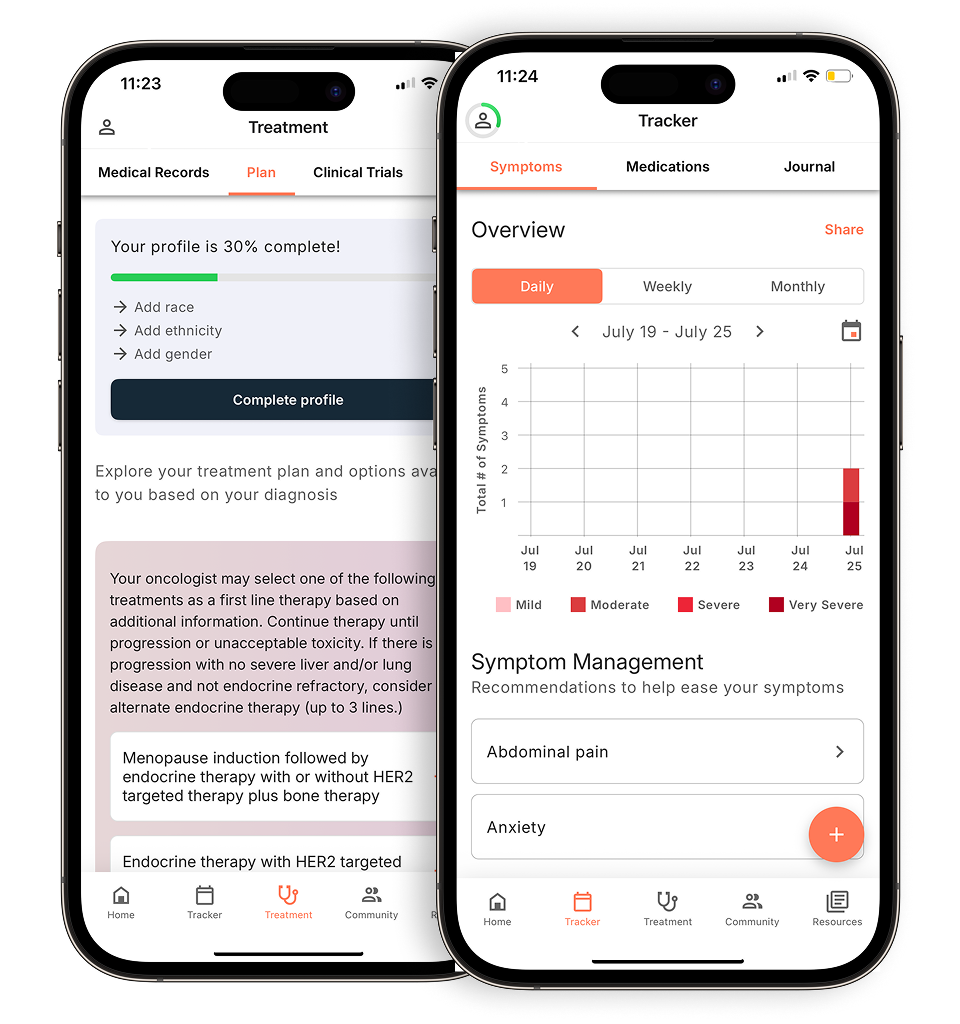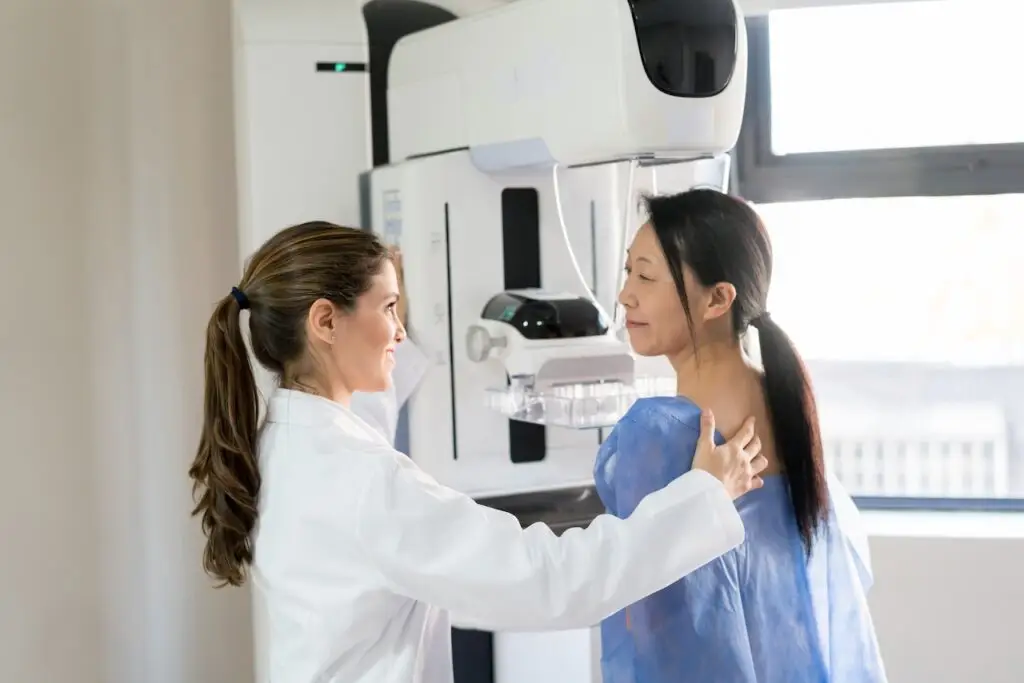Navigating a diagnosis of breast cancer can be a complex journey, and this is especially true for a subtype known as triple-negative breast cancer (TNBC). This type of cancer is a bit different from others. It doesn’t have three particular receptors that many breast cancers usually do, which means it doesn’t respond to the treatments developed to target them. This unique aspect makes TNBC a bit more of a challenge to treat, but please don’t be discouraged.
Just as every individual is unique, so too is every cancer, and treatments are becoming more personalized than ever before. This is why, if you’ve been diagnosed with TNBC, it could be really beneficial to work with an oncologist who has specific experience with this type of cancer. They would have a deep understanding of the unique characteristics of TNBC, the latest treatment protocols, and new developments in the field.
What is Triple Negative Breast Cancer (TNBC)?
Evidence-based guidance powered by NCCN Guidelines®
Personalized treatment plans shaped by the latest oncology standards—tailored to your diagnosis.
Get started
View your personalized treatment plan in the Outcomes4Me app
Use your diagnosis to unlock personalized NCCN Guidelines®-aligned recommendations.
Continue in app
Triple-negative breast cancer is a term used to describe any breast cancer that does not express estrogen receptor (ER), progesterone receptor (PR), and HER2/neu. Approximately 10-15% of all breast cancers diagnosed are triple-negative. Since these cancers lack the necessary receptors, they do not respond to hormonal therapy or drugs targeting HER2. As a result, TNBC generally calls for a more aggressive treatment approach and can recur more frequently compared to other types.
Treatment Options for TNBC
Despite the challenges TNBC poses, several treatment options are available. The choice of treatment will depend on factors like tumor size, grade, and whether the cancer has metastasized to other parts of your body.
For treating early-stage triple-negative breast cancer (TNBC), a small tumor can often be removed using breast-conserving surgery or mastectomy, with a subsequent check of the lymph nodes. If the tumor is large or if cancer is found in the lymph nodes, post-surgical radiation may be employed. To lower the risk of cancer recurrence, post-operative chemotherapy (adjuvant chemotherapy) might also be administered. For patients with a BRCA mutation and a tumor size between 2cm and 5cm or 1 to 3 axillary lymph nodes with cancer, the targeted drug olaparib (Lynparza) could be given for a year following adjuvant chemotherapy, potentially improving outcomes.
In some cases, chemotherapy, either alone or in combination with pembrolizumab (Keytruda), is used prior to surgery (neoadjuvant chemotherapy) to shrink a large tumor and/or cancerous lymph nodes. If cancer is still detected in the surgical tissue after neoadjuvant chemotherapy, several options may be considered. These include oral chemotherapy with capecitabine (Xeloda) for 18 to 24 weeks, additional pembrolizumab (as adjuvant treatment), or for women with a BRCA mutation, a year’s prescription of the targeted drug olaparib. Each of these options can contribute to reducing cancer recurrence and patient survival.
If your cancer returns in different parts of the body, potential treatments could include chemotherapy or the administration of the antibody-drug conjugate (ADC) sacituzumab govitecan, also known as Trodelvy.
Clinical Trials
Clinical trials can provide an opportunity to access new and emerging therapies for TNBC. They investigate the effectiveness and safety of experimental treatments, which may sometimes offer the best therapeutic options. For TNBC patients, clinical trials can be particularly important. Given the aggressive nature of TNBC and its lack of response to standard hormone therapies, there is a continuous quest for new, more effective treatments. Clinical trials can offer access to these emerging therapies, sometimes before they are widely available.
Why an Experienced Oncologist Matters in Treating TNBC
Understanding the complexities of TNBC and having an oncologist who is well-versed in its treatment can significantly influence a patient’s prognosis. From surgical interventions to innovative drug therapies, there are several potential routes to manage TNBC effectively. Empowering yourself with the right knowledge and seeking the right healthcare professional are crucial first steps in navigating the journey towards recovery.
As you continue your exploration of understanding and managing triple-negative breast cancer, remember that you’re not alone. Outcomes4Me is here to help you stay informed of the latest treatment options and connect you with potential clinical trials tailored to your unique circumstances. Don’t let information be a barrier; let it be a tool for empowerment. Download the Outcomes4Me app today and take the next step in navigating your TNBC treatment path with confidence and clarity. Together, we can make your experience a little easier and more hopeful.
For more support resources available for TNBC patients, read our previous blog post.
Personalized support for real care decisions
Understand your diagnosis, explore clinical trials, and track symptoms--all in one place.
Get started
Compare treatments, prepare for appointments, and track side effects—all in the app
Built for your diagnosis, Outcomes4Me gives you the tools to make confident, informed decisions—right when you need them.
Continue in app






